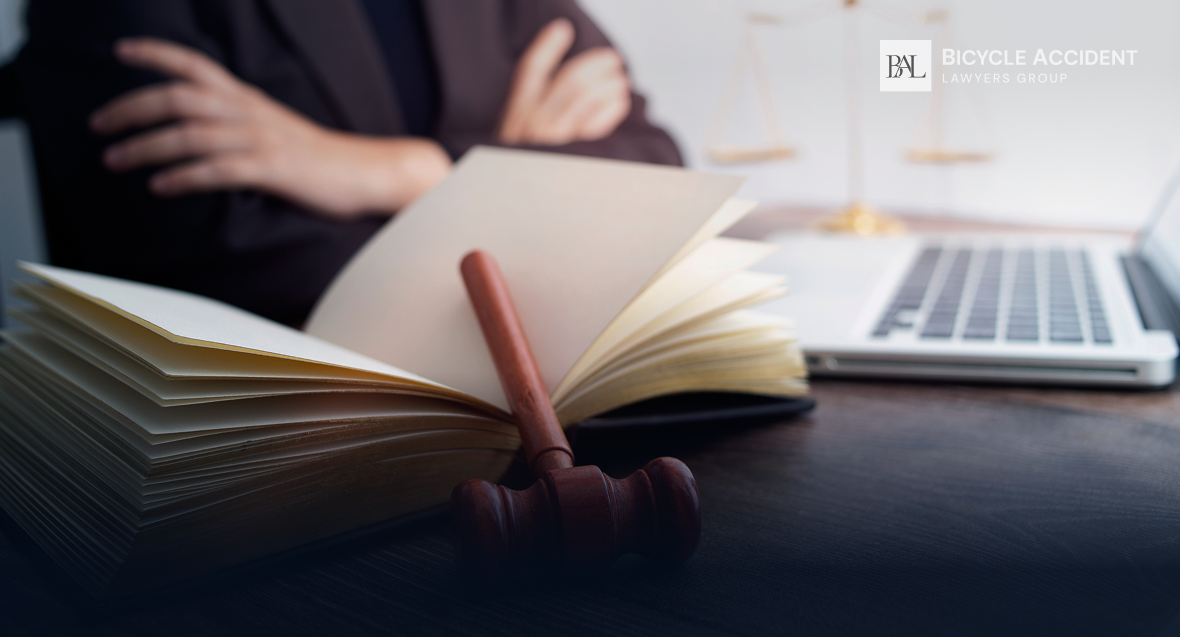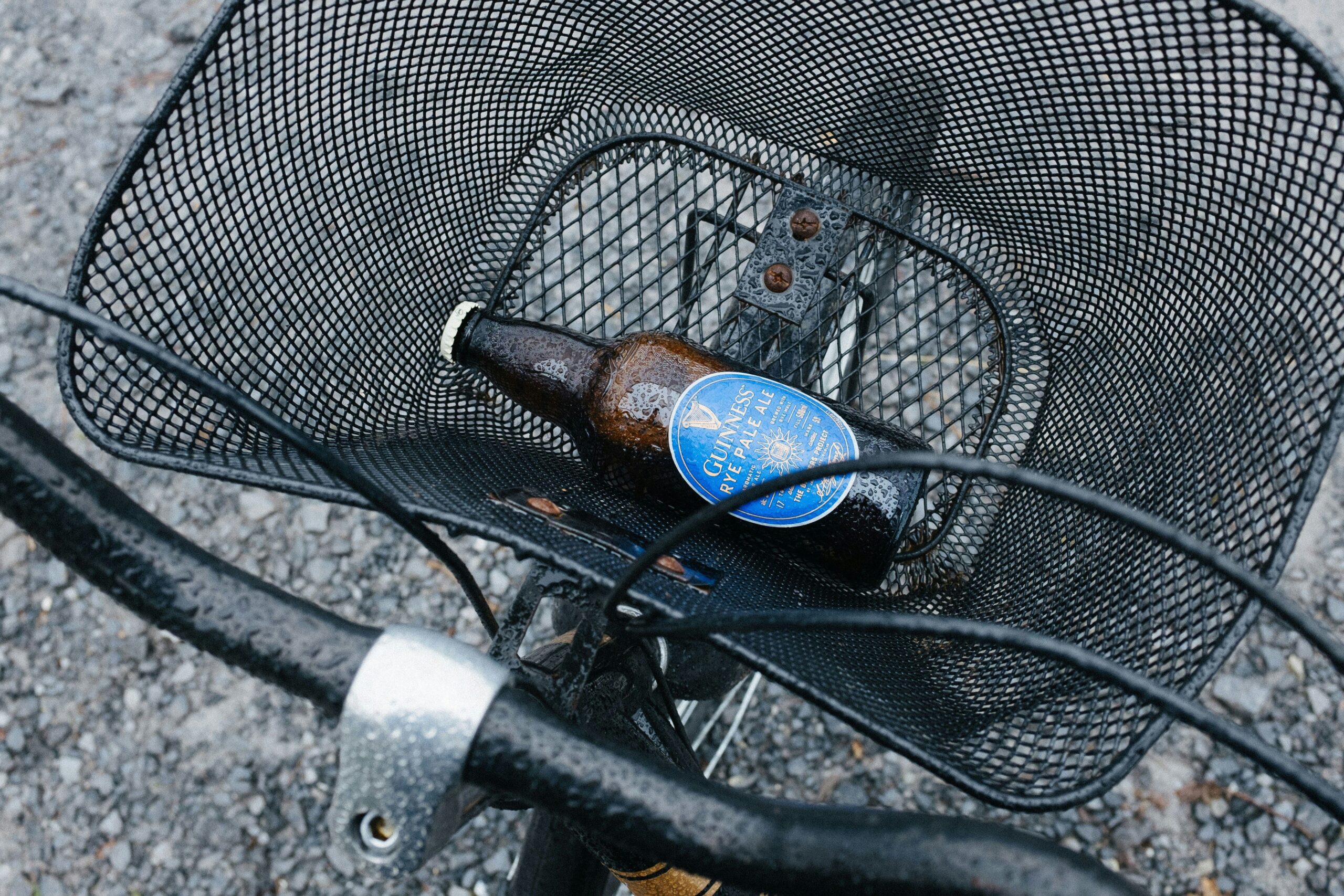Potholes are one of the most understated road hazards that pose a palpable threat to various road users, especially bicyclists. A cycling accident caused by a road defect can be as serious as any other crash, inflicting more than just property damage.
If you’ve found yourself on the ground and hurt after your front tire swallowed a pothole, you shouldn’t let the incident slide. States, counties, and cities bear a direct responsibility for the condition of the roadways in the vicinity. It means that you can hold these parties accountable for your losses if you know how to make a cycling pothole claim. That is precisely what we’ll look into in this guide; dive in to learn more!
Key Takeaways
- Road defects are a common cause of bicycle accidents, resulting in valid legal claims.
- Government entities can be held responsible for the accident if they are informed about the road defects but fail to attend to them on time.
- A strong pothole claim requires solid evidence.
- Bicycle accident lawyers can help you navigate the legal process and recover the fair compensation you deserve.
- A pothole case, just like any other personal injury claim, has a strict expiry date, defined by the state laws.
Are Pothole Bicycle Accidents a Trend or an Exception?
Not everyone knows, but almost 200 million potholes are repaired in the USA on a yearly basis. Growing traffic loads contribute to the stats, and the federal authorities have to spend at least $3B to fix these road defects. However, that is not where the concerns end. The recent survey shows that almost 30% of all traffic accidents occur because of poor riding conditions in the country. Urban areas prove to be more dangerous than rural roadways.
Drivers aren’t the only road users who suffer from such road defects as potholes. The research from NSC Injury Facts states that over 13% of biking incidents are the direct aftermath of riding into a pothole. Although federal data on pothole accident trends is limited, a Boston-based study indicated that at least 34% of all cycling accident victims admitted that they got injured because of unfit riding conditions, including potholes in the road.
On a slightly brighter side, the Infrastructure Investment and Jobs Act became law in 2021. So, the federal investment into various infrastructural objects across the country, including roads and bridges, accounting for $550B, should be spent within the 2022-2026 period and improve the alarming stats.
Does Your Cycling Accident Qualify for a Valid Pothole Claim?
Let’s make it clear — not every pothole accident has a valid settlement potential. No matter how frustrating it sounds, your cycling accident must meet a few criteria to qualify for a successful claim. These criteria include, but are not limited to, negligence, serious injuries, and liability.
Is There a Negligent Party to File a Claim Against?
It is close to impossible to win a case if there isn’t a party responsible for the inflicted damages and losses. A pothole claim isn’t much different in that regard. Since road defects are the primary responsibility of either local or governmental authorities, you must prove that they:
- Discovered road defects through routine inspection but failed to repair them on time.
- Active citizens previously reported the issue, but the authorities ignored the notes.
- Failed to signal about the pothole using a corresponding signature or sign.
- If you check either of these boxes, the chances are that you have a solid claim.
Did You Suffer Injuries or Losses as a Result of the Cycling Accident?
A bicycle accident claim always revolves around actual damages or losses that the plaintiff wants to recover. That is why it may not be enough to report the road defects and prove that the local authorities knew about them. You’ll have to provide evidence that someone else’s negligence led to physical harm, property damage, or emotional distress. You can use your medical records, lost wages reports, repair estimates, and other proof to support the claim.
NOTE! Don’t discard seemingly minor injuries without a consultation with a medical professional. Some traumas may have a delayed effect that only a trained expert can notice.
Road Maintenance Responsibility: Who’s to Blame?
You must determine the main responsible party before you file the claim. If you file a pothole claim against the wrong party, you may not recover the compensation you seek. Besides, government complaints have a specific timeframe for compliance. That is why it is crucial to pinpoint the exact location where the cycling accident took place, because:
- City governments are responsible for streets and bike lanes within the city limits.
- County governments take over roadways outside the city and control rural areas.
- State transportation agencies are in charge of state roads, highways, and other major routes.
- Private property owners must keep parking lots, driveways, and other private roads in good condition.
NOTE! A qualified pothole bicycle accident lawyer can help you define the liable party in time to file a strong and success-oriented claim.
Common Types of Traumas Sustained in a Pothole Accident
A pothole isn’t just an annoying obstacle on a bike path. When you hit it, it is physics working against you. As the front wheel swallows the pothole, the rider is thrown forward and onto the ground. Here’s the list of the most common injuries that such a thrust often results in:
- Broken bones: It is natural to instinctively shield yourself with your arms to break the impact of the fall. That is why broken arms and wrists are on the list of the most common pothole accident injuries.
- Head injuries: Diving over the handlebars after hitting a pothole often leads to varying-scale head traumas. Concussions and other traumatic brain injuries pose a serious threat to cyclists, especially if they don’t have a helmet on.
- Facial injuries: As you fall and hit your face on the ground, the impact can trigger various facial traumas, such as cuts, bruises, and chipped teeth.
- Road rash: Sliding over the concrete tears through your clothes as well as the skin. That is why skin abrasions are also on the list of the most frequent cycling accident injuries.
- Back injuries: A harsh landing on your back or tailbone can lead to different spinal cord injuries, including but not limited to herniated discs and chronic pain.
Practical Steps to Take After a Pothole Bicycle Accident
Many tend to underestimate the damage that a pothole can inflict on a rider. To protect your health, property, and legal rights, you must know how to behave right after the incident. There are a few simple steps that can back up your story and help you recover the compensation you deserve:
-
Assess the damage scale
An accident can be pretty unnerving, not to mention traumatic. That is why you should take a breath and try to comprehend its scale. Wiggle your fingers and toes, rotate your neck, and inspect yourself for any open wounds. If you are in sharp pain, don’t try to repress it — call 911 immediately.
-
Investigate the scene
In case you feel well enough to document the accident scene, you should do so. Take out your phone and take pictures of the pothole from different angles, your injuries, and the bicycle or other gear damage. Tape measure the hole or put a water bottle next to the pothole to reflect its size.
-
Look around for witnesses
If anyone has seen you fall and they say, “That pothole has been there for months,” or something along these lines, ask for their statement and contact information. A witness statement like that will surely strengthen your claim.
-
File a formal report
You should submit an official report of the accident. It may be possible to do so online, or maybe you will have to go to a local authority or agency. In either case, inquire for a copy of your request.
-
Schedule a post-accident checkup
Even if you feel fine, it is always a good idea to go to an ER. Firstly, some injuries may be masked by the rush of adrenaline and all the fuss of the situation. Secondly, official medical records serve as palpable evidence in the claim.
-
Consult a legal expert
Googling your rights is good, but only a trained attorney can help you understand your legal position. Many law firms offer free consultations and case evaluations, so you should use the opportunity.
-
Note distractions
If you were riding in headphones, keep in mind it’s not advisable. It can reduce awareness and may be used to argue partial fault, even if it doesn’t void your claim.
Who to File a Pothole Incident Claim Against?
The fact that your cycling accident took place on the road does not necessarily mean that there’s a single party against which to file a claim. Among the most typical parties responsible for inadequate road conditions are the following:
- Municipality: Governmental entities are in charge of public roadway maintenance. If the cycling accident occurs on a city street, bicycle lane, or any other public-access road, you can file the claim against the responsible authority.
- Contractors: If the contractors or a utility company recently fixed the pothole, but the patch collapsed, the party will be held liable. The same goes for open trenches without corresponding signs notifying of road defects or dangerous obstacles.
- Service providers: Sometimes, water, gas, or electrical companies have to disrupt the roadway to access and fix various breakages and leaks. However, if the provider fails to signal about those temporary hazards they create in the process, you can hold them accountable for the aftermath of the accident.
- Multiple parties: In the most complicated cases, different parties contribute to the situation. Suppose a city hires a private contractor to attend to existing road defects. In that case, every party will bear partial liability for the incident, and you may want to consult a field-savvy lawyer to decide which party to hold accountable.
How Do You Claim Pothole Damage?
Most governmental entities acknowledge the possibility of pothole accidents and their impact on victims. That’s why many municipalities have a protocol in place, offering forms to report both the pothole and any resulting damage.
It is possible to file a pothole claim online, by mail, or in person. It is impossible to file such a request by phone, though.
A damage claim form is quite simple yet extensive. However, it takes thoughtful preparation to be able to recover the losses you sustained to a full extent. Most forms will require the claimant to provide the following information:
- Full name, address, and contact details.
- Time and date of the accident.
- Location of the incident. You can use GPS coordinates for this purpose.
- Description of the damages you’ve suffered.
- Evidential proof of your losses. You can attach medical reports, receipts, digital evidence, and other information that supports your claim.
NOTE!
Most states require you to file a notice of claim within 90 days if a government entity is involved. This is not the lawsuit itself, but a required first step. After that, you may have 6 months to 2 years to file the actual lawsuit, depending on state law. Missing either deadline can void your claim, so act quickly.
Main Types of Evidence You Need to Make a Solid Pothole Claim
A claim is often as strong as the evidence that supports it. To build a success-oriented case, you will need to acquire a fair share of proof, which includes but isn’t limited to the following pieces:
- Pothole photos: Don’t limit your evidence to a single image of the road defect. Take around 3-5 pictures that reflect the size, location, and surroundings.
- Location confirmation: Pinpoint the location of the pothole on Google Maps and screenshot it.
- Damage documentation: Take pictures of every crack and broken piece on your bicycle. Document any damage to your clothes and gear, such as a cracked helmet, broken phone mount, or torn sportswear.
- Repair estimates: Visit a reputable repair shop and ask them to provide a detailed repair quote, and make sure your name is listed on the document. If you’ve had your bike already fixed, ask for an invoice that reflects your expenses.
- Medical expenses: Whether you’ve been to an ER or hospitalized, you should gather every medical bill, doctor’s note, or prescription and attach it to the claim file.
- Communication records: Save a copy of your reports and any other communication with the officials.
It may seem like a tiresome task to compile all these papers into a single case, but a valid paper trail will boost the credibility of your claim considerably.
Main Types of Compensation to Recover After a Pothole Cycling Accident
Although pothole accidents vary in scale and severity, most of them are similar in the type of compensation that a victim is entitled to. An average claimant can recover the following damages:
-
Economic damages
Out-of-pocket losses, such as bike repairs, medical bills, transportation costs, and lost wages, are monetary damages that can be recovered in full after the accident. The only condition is that you have bills and receipts that prove your listed expenses.
-
Non-economic damages
Intangible losses, such as personal pain and suffering, anxiety, and loss of joy in life, can’t be measured in a precise financial equivalent, but they are just as real. Often, the non-monetary damages are calculated by multiplying economic damages by 1-5, depending on the severity of the accident.
-
Punitive damages
This is the rarest type of loss claimed in a pothole biking incident. However, if the responsible party was intentionally reckless or negligent, you can claim those too. For instance, a local authority was aware of the existing issue but took no action to repair the pothole. In that case, punitive damages will be awarded to punish the liable party and prevent such instances from happening in the future.
How Much Is My Cycling Pothole Claim Worth?
The final estimation of your pothole claim depends on multiple factors. These include the medication costs, loss of income, property damage, and emotional suffering. You can use a bicycle accident compensation calculator to derive an approximate worth of your case, while we’ll break down estimated compensation costs based on the severity of the sustained injuries:
| Injury type | Notes | Settlement amount |
| Minor injuries | Skin abrasions, minor cuts, and lacerations with no lasting effect on the victim’s life. | $1,000-$5,000 |
| Soft tissue damage | Sprains and strains that impact a person’s ability to move result in ER visits, physical therapy, and time missed from work. | $5,000-$20,000 |
| Facial injuries | A broken nose or a dislocated jaw may leave permanent scars and affect a cyclist’s self-perception. Broken teeth often require costly implants and take time to heal. | $10,000-$50,000 |
| Dislocations | A dislocated shoulder may impose nerve damage and lead to chronic pain. | $20,000-$100,000 |
| Broken bones | Fractured ankles, arms, and wrists require a cast and interfere with the claimant’s everyday activities. | $15,000-$50,000 |
| Head injuries | Ranging from a mild concussion to serious traumatic brain injuries, the trauma may have a lasting and life-altering effect on the rider’s life. | $50,000-$500,000 |
| Spinal cord damage | Injuries to the back can inflict irreversible damage and cause permanent disabilities. | $100,000-$1,000,000 |
Get Expert Bicycle Accident Lawyer Assistance for Free Today!
Potholes and other road defects pose a more palpable threat to cyclists than the local authorities would like to admit. However, hitting a pothole with your front wheel isn’t just bad luck — it is someone’s negligence, and we can help you hold the liable parties accountable. A broken frame or a fractured rib — don’t deal with the piling costs on your own! Contact our professional lawyers for a free case estimation and file a timely claim programmed for success!
Don’t miss the chance to get the compensation for your injuries. Start a FREE case evaluation now to know how much you can get!







